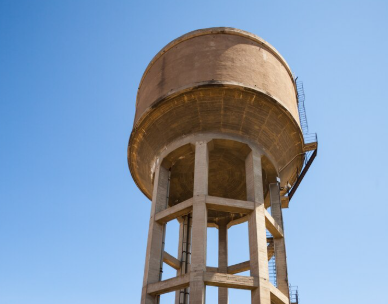Water tanks are increasingly being used in commercial establishments, housing societies, and agricultural settings to store water for drinking and other purposes. You can find these reservoirs in the form of precast concrete water tanks, plastic, fiberglass, and stainless-steel tanks all of which suit different applications perfectly.
Water tanks need regular maintenance if they are to give you longevity and high efficiency. These tanks are prone to cracks, algae and bacteria growth, and dust accumulation. These factors not only lead to poor water quality but also destroy the water tanks over time.
However, with regular proper maintenance, you can easily avoid these issues and this is what this blog is all about.
So, if you are looking to clean your water tank but have no idea how to proceed, then keep on reading till the end.
- The Importance of Water Tank Maintenance
- Effective Water Tank Maintenance Tips
- Conduct Regular Thorough Inspections
- Clean and Disinfect
- Check Water Quality
- Repair Leaks and Visible Damage
- Protect from Sun Damage
- Install Sediment Filters
The Importance of Water Tank Maintenance
Before we get into some useful water tank maintenance tips, let’s first look at why this maintenance is essential. For starters, unclean water tanks are breeding grounds for germs and bacteria that can cause several serious waterborne diseases.
Another factor is animal intrusion as well as environmental pollution that can affect these tanks through leaks, damaged lids, and cracks. Apart from that, not keeping your tank and its related systems maintained can damage valves, pipes, and pumps which reduces water flow and increases energy consumption.
To get rid of all these major issues, you need to have your Water storage tanks cleaned on a regular basis. This maintenance extends the lifespan of the tanks and ensures cost savings by reducing costly repairs and the need for water tank replacement.
Effective Water Tank Maintenance Tips
Following are some useful water tank maintenance tips that you can follow to ensure higher long-term efficiency and longer lifespan of these systems.
- Conduct Regular Thorough Inspections
Experts recommend a thorough inspection of your water tank twice a year. These regular inspections allow you to find signs of cracks, leaks, corrosion, damage, or other minor issues that can potentially lead to tank failure.
In these inspections, you need to look at the interior and exterior of the tanks carefully to find leaks, cracks, or bulging. You also need to look at the tank’s roof, vents, pipes, fittings, seams, and joints.
Make sure all these things are clean and in good condition. This can minimize water loss and facilitate better cleaning down the line.
- Clean and Disinfect
Next up, you need to clean water tanks from inside and out regularly. Regular cleaning followed by disinfection prevents the accumulation of dirt and the build-up of bacteria, algae, and other sediment.
To clean the tank, drain it entirely and then use a high-pressure hose to clean the interior and exterior. After that, you can use a mild non-toxic detergent and a brush for cleaning the interior of the water tank. Just make sure to rinse the tank thoroughly with clean water afterwards.
For disinfection, you can use a chlorine-based solution in the ratio of 50 ppm (parts per million). You can fill the tank with water and let this solution sit for at least half a day. Then you can drain the tank and fill it with fresh water after rinsing.
- Check Water Quality
You also need to check the quality of the water inside the tank from time to time. You can find several water testing kits in the market that give you an idea about the current water quality. If the water quality appears to be low, you can instantly stop the supply and clean the water tank to prevent damage to your health as well as to the water storage system.
Following are some parameters that you need to look at when checking the water quality
- Check the presence of microbial contamination like E. Coli or coliform bacteria.
- Also look at the TDS or total dissolved solids level which shows the presence of contaminants like salts, heavy metals, minerals, etc. in the water. If the TDS level is above 500 ppm, your tanks need cleaning.
- The pH of the water in the tank needs to be between 6.5 to 8.5. If it is higher, it can lead to scale formation or corrosion.
- You also need to look for turbidity(cloudiness), smells, and unusual water taste to ensure the water quality is safe.
- Repair Leaks and Visible Damage
You need to look at the water tank closely and identify minor leaks or cracks. These leaks can affect water flow and cause contamination. Minor leaks can be repaired using epoxy or waterproof sealants.
However, if the leaks are more and larger in size, make sure to consult the professionals who can repair these properly in no time.
- Protect from Sun Damage
Plastic or fibreglass water tanks are prone to damage by sunlight and UV rays. To protect such tanks, you can use UV-resistant paints or you can cover them with a shade cloth.
Screening water tanks is another effective solution that keeps the sunlight and UV rays at bay thus extending the lifespan of your water tanks.
- Install Sediment Filters
You can also employ sediment filters in your water tanks that can prevent dirt and debris from entering your plumbing systems. These filters ensure the water that reaches you is free from contaminations which ensures better health.
Just make sure to clean and replace these filters from time to time to guarantee better water flow and quality.
Conclusion
Water tank maintenance is extremely important as it keeps the water clean, ensures smoother flow, and prevents damage to your tank and the plumbing systems.
Regular inspections followed by cleaning as well as necessary repairs can ensure your water storage tank is always in its best shape. The water tank maintenance tips given above can ensure your tank is free from dust, debris, bacteria, and other contaminations.
You can also use these guidelines to take care of minor damage and repairs which leads to better overall performance, cost savings, and a longer lifespan of your water tank.
Visit us at Naran Precast Concrete Co. to get the best quality and low-maintenance precast concrete water tanks and pits for all residential and commercial applications.

